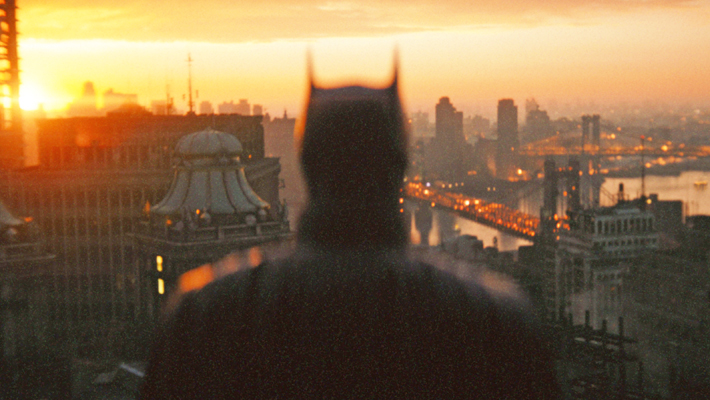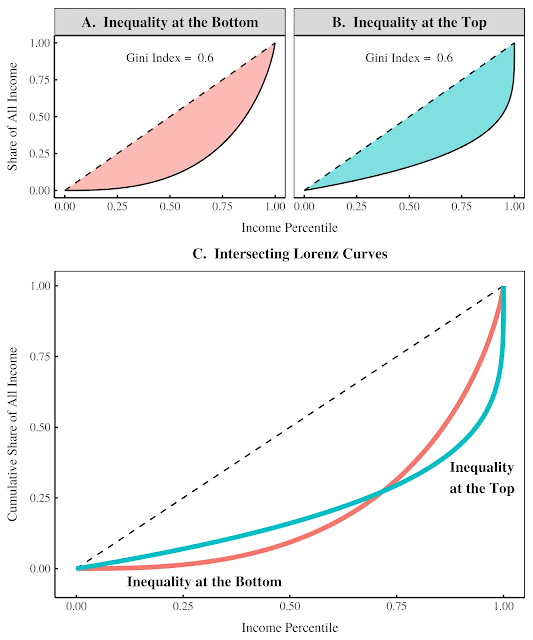If Gotham is such a terrible place to live, why do people live there?
From a group chats: "[The Batman (2022)] made me really afraid of Gotham. It’s the worst fucking place to grow up. Can you imagine growing up in a space with no possibility?" "Very rich, very poor, and no in between."
I agree based off movies and comics, Gotham appears to be a city with zero opportunities for its people. But is that possible?
Sure, it's possible. But a zero opportunity Gotham is so unlikely, the ideas shouldn't be considered.
Too lazy to read? Watch the below YouTube video of the article produced by Kier Gomes.
Gotham City
Gotham City is mostly observed from Batman's point of views, with The Joker and Harley Quinn the top two alternatives. Batman sleeps all day, and stays up all night fighting and tracking criminals. Viewers see a very biased view of Gotham City.
Off screen, during normal human waking hours, Gotham should be a lot more like NYC, Chicago, or other large cities. Lots of people, lots of businesses, lots of problems, but also lots of opportunity, along with the crime and corruption that makes Gotham infamous. Gotham is going to have safe and affluent areas that Batman and viewers never see.

"Gotham City is a major economic center within the United States of the DC Multiverse; its important industries include: manufacturing; shipping; finance; fine arts, represented by its numerous museums, galleries, and jewelers; and the production of giant novelty props. In addition to its commercial seaport, it also supports a naval shipyard.
Major businesses based in Gotham City include its most noteworthy corporation: Wayne Enterprises, which specializes in various industrial aspects and advanced technological research and development."
Even if the Gotham City was run by criminals profiting from the exploitation of its people, there has to be people with capitol (money or assets) to exploit. Gotham doesn't have slavery and it isn't post apocalyptic. The streets are crowded with people. The bridges are functioning and full of cars. There are skyscrapers. Even if criminals own most of the buildings, they are renting them to companies and people. Companies need employees to run their operations. Those employees need places live, places to eat, places to shop, places to send their offspring while they work, places to get medical attention, places to be safe, etc.
We get the cable news view of Gotham City.

Gotham can't have millions of people without millions of jobs. Below is a list of the top companies in NYC, as a reference point. The second list is the biggest employers employees physically working in NYC, the data is pre-covid. Just the top 10 companies in NYC alone employed over one million people.
You can't make money without people. These companies can't survive or
succeed without a working/middle class to run the operations. Gotham
City has to have something to offer companies, and part of it has to be a
working class. In return those companies have to offer something for
employees.
It's possible Gotham City's corruption could turn Gotham into a tax haven for corporations. In that case, the largest corporations wouldn't employ many people. But that doesn't explain where all the people on the streets, subways, and bridges are going.
It is more likely that Gotham, especially based on the wiki information, has a large working and middle class with time and money to spend on the industries mentioned.If there weren't opportunities for people in Gotham, the working and middle class, along with the business sectors would leave Gotham City for better prospects. Gotham is a dangerous place to live. In order to take on the risks of living, commuting, and working in Gotham, people and businesses need more than money. They need opportunities, entertainment, culture, and all the aspects of urban life that attract people to cities.
An entrepreneur isn't going to attempt starting a business in Gotham if their isn't potential profits to out weight the risks and stress of dealing with corruption and crime. Existing companies would face a similar choice.
Analogy: Wade School has a bully who is stealing student's lunch money everyday. Students get $5 for lunch, and the bully takes $3, so students are left with $2 for lunch each day. Students find out that there is another school, Wilson School, they can to attend. Wilson School will cost students $1 day to attend, and Wilson School's bully is nicer, he only takes $1 each day from students' (the bullyees?) lunch money. If students move schools they'll profit $1 each days, $3 instead of $2. Assuming a students main priority is having the most lunch money (a businesses' profits in this analogy), rational students will move to Wilson School. That's exactly what Gotham businesses would do.
If Gotham is as corrupt and dangerous as it appears, there must be a lot of money to be made for multiple classes of people. Money is the reason why people risk their lives and integrity to live and work in Gotham. Otherwise, most people wouldn't take the risk. Think of a recent high school or college graduate, why would they stay in Gotham or migrate to Gotham? Why not move to a safe prosperous cities that doesn't host a comic book series worth of villains and crime?
If at some point Gotham became too corrupt and dangerous, people and companies would flea and Gotham would soon collapse.
There are correlations between inequality and murder rates in US cities. And Gotham is constantly described with growing crime, it is safe to assume Gotham has large inequities. So, first conclusions: Gotham City is showing negative affects of extreme inequality, like crime, violence, poverty, and corruption. Second conclusion: Although likely in economic decline, Gotham has opportunities for working, middle, and upper classes. Third conclusion: Gotham needs a large middle class to sustain its title of "major economic center."
Inequality in Gotham City
Gini coefficient, or gini index, is an interesting measure of inequality. Although gini indexes are used to measure a variety of inequalities, the gini index most commonly measures wealth or income inequalities, income being a lot easier to measure. The gini index alone is not a useful or accurate stat. But combined with other measures and looking at the Lorenz Curve below, it gives a more complete view.
A gini index of 1.0 means one person possesses everything. A gini index of 0.0 means all people possess the same exact amount.
The first chart is a list of the highest gini indexes in the US. The second chart compares the lowest 20% of people's income, middle 60% of people's income, and highest highest 20% of people's income.
One thing to consider, the US Census data does not account for people who
live in different cities and commute to work. If most higher wage earners in NYC live in New Jersey, that gives a misleading gini index of the greater area as a whole.

Lorenz curves are more complete visuals of inequalities. The below lorenz curve visualizes how inequality increases as the curved lines move further away from the linear green "equal wealth" line.
Below visualizes one of the limitation of the gini index. Populations with an equal gini indexes can, and will, have different distributions at the tops and bottoms of their populations. Both curves below have a gini index of 0.6. But the peach curve has ~25% of their lowest earners making very close to 0 income. And the blue curve has about ~10% of its highest earners making over 50% of the income. When the blue curve is linear (a straight line) that means all those people are making the same amount. The peach curve is displaying that higher earners make more and more. (pause to examine the two graphs and conceptualize the differences).
So what is Gotham City's gini index and lorenz curve?
This question depends on a lot of economic factors that Batman stories do not provide. Where do most people live in Gotham? How segregated are the different classes of people in Gotham and the surrounding areas? How many workers in Gotham commute from another city or suburb?
Gotham has to have at least one of the following, or both, for its middle and working classes:
- nice parts of the city
- safe places to live outside, but within, commuting distance of Gotham City.
Fourth conclusion: Gotham City's working/middle class live within the Gotham area.
How Much Inequality is Possible before Gotham collapses?
At what point would a city economically collapse from inequality?
If people were too poor to buy anything, the rich would start to lose their wealth and income by supporting the poor. South Africa consistently is reported as the country with the highest gini index for income, around 0.63, higher than any US city. But even with all South Africa's corruption and racism, their gini index drops when adjusted for social welfare (I didn't find a good source for this, but I think the idea is worth considering even if it might not be 100% accurate).
Globally, the gini indexes are calculated to be as high or higher than South Africa's, between 0.6-0.7.
If we go look at the countries with economies that collapsed, wars, political unrest, and unstable institutions are the primary factors. These factors could be influenced by inequalities in wealth, but they don't seem to be the main causes.
This question, "how much inequality is possible," requires a lot more rigorous analysis and economical understanding than I hoped. If an economist has studied this question, I was unable to find their work yet.
How could Gotham economically collapse from income/wealth inequality? It's an interesting thought experiment.
At some unknown inequality, companies will lose too much money. They'll either move, go out of business, or barely survive. As businesses go bankrupt and move to other cities, more rentals will be vacant. The vacancies will drive down the cost of rent. Can could bring more poor people to the low rents and sustain or increase inequality more. But at some point, investors will want to return to make money...
In a globally or even nationally connected society, it's hard to see a situation with all rich and all poor people living together without a middle class.
Detroit is the best example of a collapsed economy in the US. Detroit isn't in the top 10 US cities. I'm speculating now, but where are their rich people? Did they stay or did they go? When opportunities decline for most people, that's not good for business.
At some point inequality is bad for business, and rich people leave, making an area more equal. Fifth conclusion: Gotham will most likely never reach a point of rich people having everything and poor people havnig nothing.
Resources/Further Reading
Glaeser, Edward, et al. “Urban Inequality.” 2008, https://doi.org/10.3386/w14419.
https://movieweb.com/is-batman-bad-for-gotham-city/
http://economicstudents.com/2013/01/what-economics-can-teach-us-about-batman/
http://www.centives.net/S/2012/is-batman-keeping-gotham-city-poor/




No comments:
Post a Comment